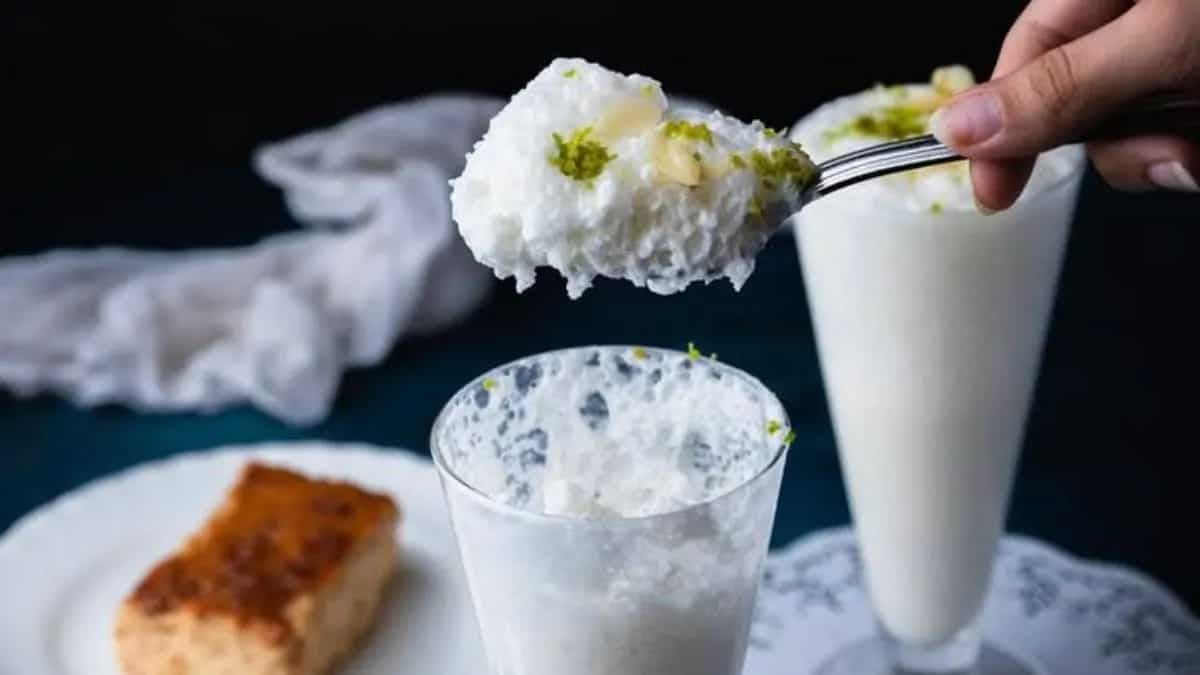
A FEW YEARS AGO, Chef Anahita Dhondy — known for her connection with the popular SodaBottleOpenerWala — recounted how she had travelled to the interiors of Gujarat, Maharashtra and Daman in a bid to uncover little-known recipes of Parsi cuisine. The highlight came when she was in the coastal town of Udvada. There, she hoped to sample the Parsi delicacy known as “Dudh na Puff”, but it had to be pre-ordered. A day later, a batch of Dudh na Puff was delivered to the hotel, by a woman on a bicycle. Dhondy chased behind her on foot, disclosing her purpose when she finally caught up with her. The woman was only too glad to take Dhondy home and show her how the sweet was made.
Also Read: Malaiyo Is Varanasi's Sweet From The Gods
In the north, it may be known as Nimish, Malaiyo or even Daulat Ki Chaat. But for Parsis, the Doodh na Puff is unbeatable. As the name indicates, this is literally just the froth on top of milk that is collected and served in tall glasses. Sugar, cardamom, nutmeg and rosewater are the predominant flavourings, apart from the goodness of the milk itself of course. For a dessert so delicate, its rarity is only natural.
Image credits: ayanpills/Instagram
The Dudh na Puff was traditionally a winter dish. This is because the milk used had to be cooled overnight, usually by keeping it out in the open, on the terrace or roof of one’s home. However, with time, the refrigerator has replaced the chilly night air as one of the dish’s essential ‘ingredients. Still, according to custom, the Dudh na Puff is eaten immediately on the following morning; of course, the cooled milk is first beaten with a whisk until the foamy froth collects on top — ready to be siphoned off into serving glasses.
Because of the practices surrounding its preparation — it had to be made and consumed between sunset and sunrise (the milk was boiled with the sugar and kept to chill at twilight, and the froth was whisked early in the morning) — and the fact that it was brought around by vendors as early as 6 in the morning, it was also known as winter’s “wake-up caller”. In older recipes, there is mention of pots of milk being hung overnight on trees, so that it would be “brushed by moonlight and blessed by the morning dew”.
In an essay titled “A Puff Of Air”, the noted author Bapsi Sidhwa writes of the Dudh na Puff being a childhood favourite, along with Kharya ni Jelly (sheep-trotter jelly). Winters in Lahore or summers in the Murree Hills, Bapsi remembers waking up to the sound of the metal whisk early in the mornings, to find her mother seated at a tiny stool in the kitchen and churning the pot of milk that had just been brought in from its night-time adventure. She equates the Dudh na Puff with happiness distilled in a glass, even as she admits that it is an acquired taste, “dependent on mystic star-lit, dew-drenched rituals, and on the renown, it enjoyed as a community delicacy”.




